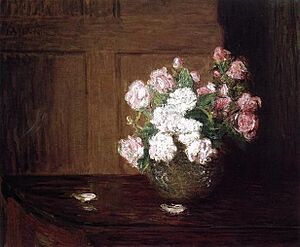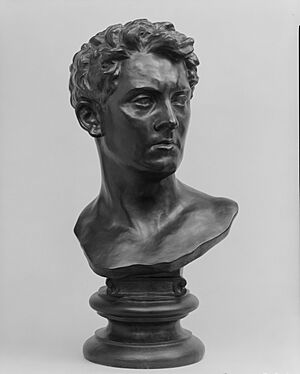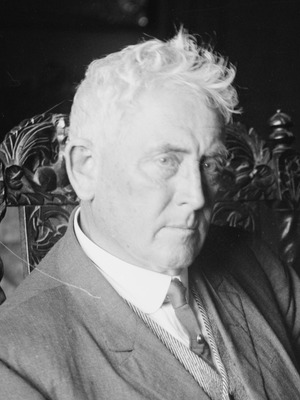J. Alden Weir facts for kids
Quick facts for kids
J. Alden Weir
|
|
|---|---|
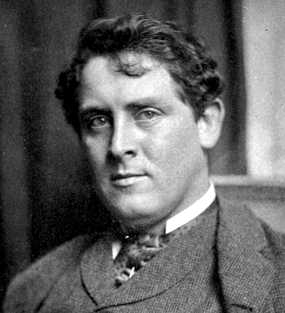
J. Alden Weir in the late 19th century
|
|
| Born |
Julian Alden Weir
August 30, 1852 |
| Died | December 8, 1919 (aged 67) New York City, US
|
| Education | National Academy of Design, École des Beaux-Arts, Jean-Léon Gérôme |
| Known for | Painting |
| Movement | Impressionism |
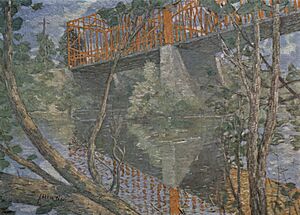
Julian Alden Weir (born August 30, 1852 – died December 8, 1919) was an American painter. He is known for his Impressionist style. Weir was part of the Cos Cob Art Colony in Connecticut. He also helped start "The Ten". This was a group of artists who wanted to show their art together. They felt that other art groups were not good enough.
Contents
Early Life and Art Training
Julian Alden Weir was born in West Point, New York. He was one of sixteen children. His father, Robert Walter Weir, was also a painter. Robert taught drawing at the Military Academy at West Point. Famous artists like James Abbott McNeill Whistler were his students.
Julian's older brother, John Ferguson Weir, was also a well-known artist. John painted landscapes. He taught painting and design at Yale University. He started the first art program on an American campus.
Studying Art in Paris
Julian Weir began his art training in the early 1870s. He studied at the National Academy of Design in New York. In 1873, he went to Paris, France. There, he studied at the École des Beaux-Arts. His teacher was the famous French artist Jean-Léon Gérôme.
Weir shared a studio in Paris with Albert Edelfelt. Albert was a Finnish artist. They became lifelong friends. While in France, Weir also met Jules Bastien-Lepage.
First Thoughts on Impressionism
Weir first saw Impressionism in France. He did not like it at all. He wrote to his parents in 1877. He said the Impressionists did not care about drawing or form. He called their work "horrible things." At this time, Weir was a traditional painter. He was respected by other artists in Europe.
Return to America and New Style
Weir met James McNeill Whistler in London. Then, he returned to New York City in 1877. He became a founding member of the Society of American Artists. He also showed his paintings at the National Academy of Design. He had first shown his art there in 1875.
Weir earned money by painting portraits. He also taught art classes. He taught at the Cooper Union Women's Art School. He also taught at the Art Students League and in private classes.
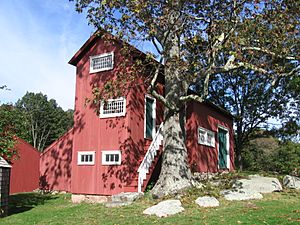
As a young artist, Weir painted mostly still lifes. He also painted human figures. He used a realistic style. This was similar to the work of Édouard Manet. Weir even bought two paintings by Manet. This showed he was starting to change his mind about French Impressionism.
Life in Connecticut
In the 1880s, Weir moved to Wilton, Connecticut. He bought a farm there. This happened after he married Anna Baker in 1883. This farm is now the Weir Farm National Historic Site.
While living there, he became good friends with artists. These included Albert Pinkham Ryder and John Henry Twachtman. Weir and Twachtman's art styles were very similar. They often painted and showed their art together. Both also taught at the Art Students League.
Weir was also close friends with Emil Carlsen. Carlsen was a still life and landscape painter. He often spent summers at Weir's farm. The peaceful farm often appeared in Weir's paintings. It was a nice escape from busy New York City.
Embracing Impressionism
By 1891, Weir had changed his mind about Impressionism. He began to use this style himself. His art show that year clearly showed his new love for Impressionism. His paintings used lighter, pastel colors. He also used broken brushstrokes, like the Impressionists.
His wife Anna died in 1892. Weir then married her sister, Ella Baker, that same year. Through this marriage, he got another farm in Windham, Connecticut. He had visited this farm before. He loved the beautiful farm and village.
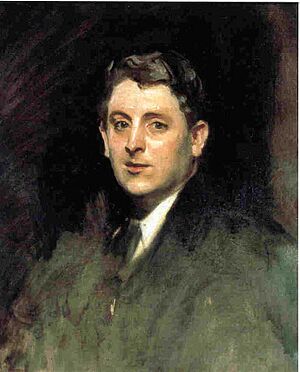
In 1893, Weir's art was shown with works by Claude Monet. This was a big honor. It showed that American Impressionism was becoming important. Weir also helped raise money for people who lost jobs. This was during the economic downturn of 1893.
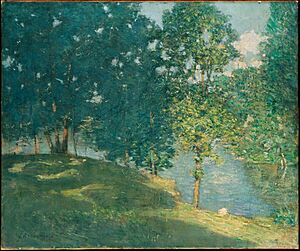
For the rest of his life, Weir painted Impressionist landscapes. He also painted people. Many of these paintings showed his farms in Connecticut. His style changed over time. It went from bright Impressionism to a softer, shadowy style called tonalism. He also became skilled at etching. After 1900, his paintings showed more traditional art ideas. They focused more on drawing and design.
Later Career and Legacy
In 1897, Weir became a member of "The Ten". This group of painters left the Society of American Artists. They felt the Society focused too much on old art styles. The Ten wanted to show Impressionist art. The group showed their art for twenty years.
In 1912, Weir became the first president of a new art group. It was called the Association of American Painters and Sculptors. But he quit a year later. This was because the group supported the Armory Show. The Armory Show featured very modern art. Weir later became president of the National Academy of Design. He also served on the U.S. Commission of Fine Arts. He was a member of the American Academy of Arts and Letters.
Weir died in 1919. He was buried in Windham, Connecticut. One of his students was the painter Harriet Campbell Foss.
Notable Works
Weir's most famous painting is The Red Bridge from 1895. It shows a bridge over the Shetucket River. This river was near Weir's Windham farm. He used colors that worked well together. This made the painting look unified. It also showed the bridge's reflection on the water.
Weir made the bridge stand out. He painted the red bridge against green woods. He used blue for the water and sky. He also showed the straight lines of the bridge. These were different from the curvy trees and branches.
Today, Weir's paintings are in many museums. These include:
- The Metropolitan Museum of Art in New York
- The Phillips Collection in Washington, D.C.
- The Smithsonian American Art Museum in Washington, D.C.
- The Brigham Young University Museum of Art in Provo, Utah
- The Portland Art Museum in Portland, Oregon
- The Wadsworth Atheneum in Hartford, Connecticut
Weir's farm and studio in Branchville are now a protected site. It is called the Weir Farm National Historic Site. His family still owns the Windham farm. His old papers are kept at the Smithsonian Institution's Archives of American Art.
See also
- List of works by J. Alden Weir
- The Ice Cutters, a painting by Weir
- American Impressionism
- Art Students League
- Society of American Artists
- Ten American Painters


